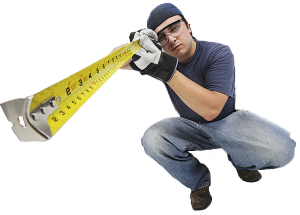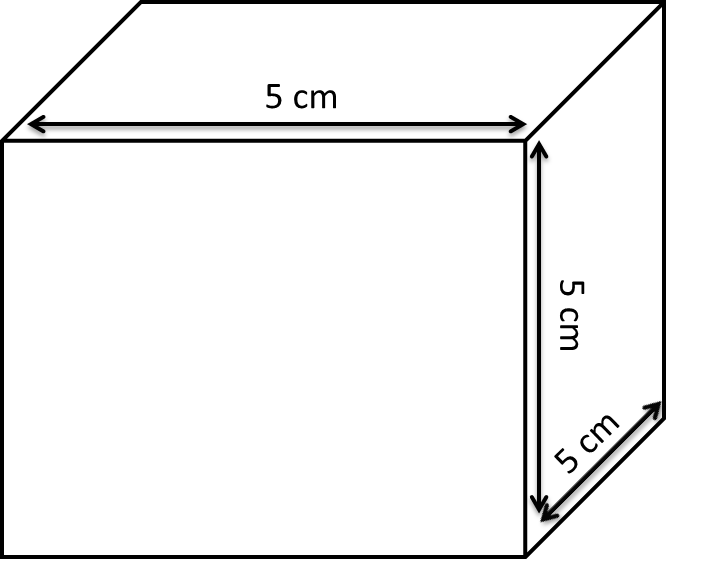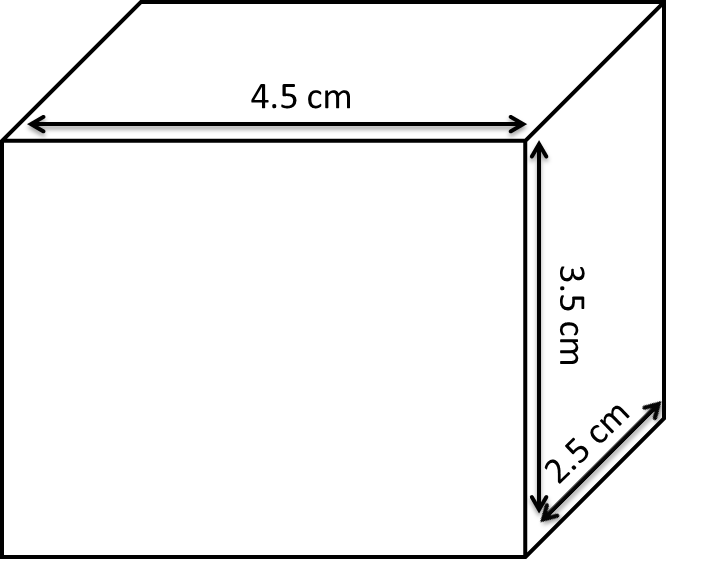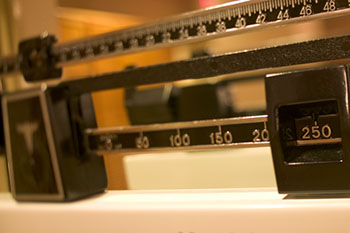
Measurement
 Part A: Measurement Problem Set
Part A: Measurement Problem Set
![]() Measuring, graphing, and converting are all skills that you will need to become a qualified Earth scientist. It is now time to prove what you have learned about measurement by completing a series of tasks that involve measuring common objects, solving for density, and graphing. Make sure to completely answer each question, to show all of your work, and to include units of measurement.
Measuring, graphing, and converting are all skills that you will need to become a qualified Earth scientist. It is now time to prove what you have learned about measurement by completing a series of tasks that involve measuring common objects, solving for density, and graphing. Make sure to completely answer each question, to show all of your work, and to include units of measurement.
This activity is available below or in a printable version.
Equipment and Materials
- Metric Ruler
- Cereal Box
- One food item with nutrition information
Measurement and Conversion
- Measure the height of your chair (floor to highest point) in centimeters
- Convert this quantity to meters
- Convert this quantity to millimeters
- Determine the volume of a cereal box in cubic centimeters.
- Convert this quantity to liters
- Convert this quantity to kiloliters
- Find a food item that has the mass listed in grams on the package
- Name of item
- Gram
- Convert to centigrams
- Convert to hectograms
Mass, Volume, and Density
- Determine the volume of the cube below in cubic centimeters.

- Determine the volume of the cube below in cubic centimeters.

- A student performs an experiment with three unknown fluids and obtains the measurements found in the table below. In which order would the fluids arrange when poured into a beaker? Sketch how these fluids would arrange in a beaker or graduated cylinder.
Fluid |
Mass |
Volume |
Fluid A (yellow) |
2060 g
|
2000 mL |
Fluid B (blue) |
672 g |
850 mL |
Fluid C (green) |
990 g |
1100 mL |
Density Word Problems
Read each scenario below and then answer each associated question.
- Charlie has a graduated cylinder, water, and an irregularly-shaped object. He pours some water into the cylinder and records the water level at 57 mL. He adds the object and records the new water level at 90 mL. Prior to this, he had determined the mass of the object to be 157 grams.
- What type of object does Charlie have, regular or irregular?
- What is the volume of the object?
- What is the density of the object?
- Katherine has an object that measures 18 cm long, 25 cm wide and 12 cm high. She places her object on a triple beam balance and it measures 125 grams.
- What type of object does Katherine have: regular or irregular?
- What is the volume of the object?
- What is the mass of the object?
- What is the density of the object?
Graphing
- Review the two data sets below. Determine which set is qualitative data and which data set is quantitative data. Create a line graph with the quantitative data set in the space provided, or use the digital graph paper provided in the Developmental Module. Make sure your graph has:
- A descriptive title
- Both axes labeled
- Units of measurement
Data Set 1
Element Name |
Percentage of Earth's Crust |
Oxygen |
47.9% |
Silicon |
28.9% |
Aluminum |
8.3% |
Iron |
5.2% |
Data Set 2
Distance from the Shore |
Depth of the Ocean |
5 kilometers |
1000 meters |
10 kilometers |
4000 meters |
15 kilometers |
3000 meters |
20 kilometers |
5000 meters |
![]()
Once you have finished the activity, please submit your responses to the dropbox.
Part B: Measurement Across the World Discussion

![]() In this topic, you learned that the United States uses a different system of measurement units than most of the rest of the world. In what ways could having a different system of measurement affect the relationships between other countries and the United States? Think about concrete examples of how measurement on different scales can affect all aspects of life.
In this topic, you learned that the United States uses a different system of measurement units than most of the rest of the world. In what ways could having a different system of measurement affect the relationships between other countries and the United States? Think about concrete examples of how measurement on different scales can affect all aspects of life.
Post your ideas to the discussion board. Then, return to the topic several times over the next few days to read your coursemates’ posts. Reply to at least two of them, making sure to offer new insights, ask questions, and encourage further conversation.
Before you begin, access the Measurement Across the World Discussion Rubric to make sure that you include all of the items required for full credit. You may need to use resources outside of this course to complete this assignment. If so, please submit a Works Cited document. If you need assistance, visit the Developmental Module for information on citing any resources that you used.



